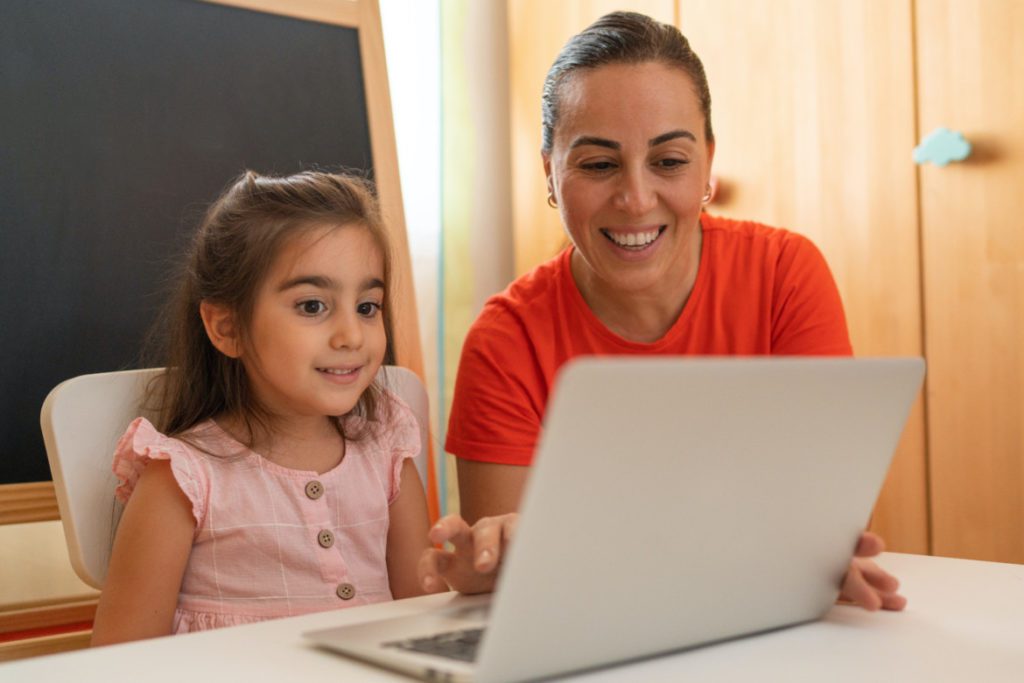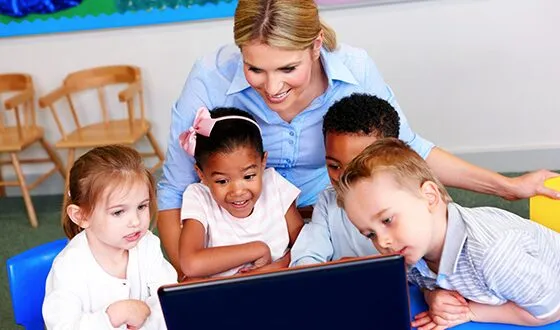Five things to consider when selecting digital learning experiences for young children

Teachers’ roles have changed quite a bit this year. Whether you teach in person, online, or a combination, technology has become an invaluable tool to enhance learning. Because of this shift, now more than ever, teachers need to quickly and effectively vet the hundreds of apps and websites that early childhood learners are accessing. How do you make sure they are relevant? How can you ensure that any technology you use is supporting and extending children’s learning, while differentiating for and representing your diverse learners? Here are the latest research-based insights on the best ways to evaluate and select high-quality digital media experiences for young learners.
#1: Engagement Is Educational
Engagement is the first step of the learning process. How can children possibly learn new information if they are not paying attention? While engagement has powerful implications for learning, it does not guarantee learning. It is your role as the educator to determine precisely what captures and keeps the child’s attention. Then you can evaluate whether it is connected to the actual learning objective. For example, a reading app that makes silly sounds or has characters jumping all around might be fun and grab a child’s attention, but may actually distract the child from learning the letter sounds being taught. An effective engagement tool could leverage those silly sounds and characters to both delight the child and bring attention to a letter sound. Seek out digital tools that are fun for children, but always question the connection between engagement and the learning objective. Educational technology should be fun for a child; it should present material in a way that is unique to the digital experience and leverage the technology to add value to the experience.
#2: Diversity Is a Definite
A great deal of research is being done around the importance of diversity in children’s picture books. Children need to see themselves, their community, and the diversity of their world represented in the material that they interact with. However, we should not stop at considering diversity in books, because digital media images are equally, if not more, influential. Look at the footage selected in the digital media. Do you see a broad representation of colors, ethnicities, gender, hair textures, and more? In science tools, look closely at diagrams of the human body and evaluate if the body is always portrayed in only one way that depicts one group as the default or norm. Representation alone is not enough; assess how individuals are depicted. Take the example of one digital media platform that showed a wide range of children in their footage of facial expressions, but used black boys consistently to model anger and aggressive behavior. Apply the same principles that you use when considering representation in books to your selection of digital media.
#3: Independence Is Important
If you are teaching young children, evaluating whether the digital learning tool can be easily used independently is critical. If the child is meant to use the tool fairly independently and cannot do so, then the resulting challenge could be exhausting for you as the educator and frustrating for them as the learner. A high-quality digital learning tool designed for a child’s independent use considers multiple factors. Look to see if the buttons to navigate the tool are clear and large. Is navigation within the tool clear? Assess if reading is needed to navigate through the learning experience. For emergent readers, the need to read can be circumvented through the use of images, repetitive symbols, and voice-overs. Educational games can even offer hints within a gaming experience that not only make the experience more independent, but provide scaffolding for a child to complete a task with the added support.
#4: Curriculum Is Connected
Digital learning media in your classroom should add value to the learning experience by having clear and thoughtful connections to your curriculum. Therefore, when you are selecting digital media, you need to ask yourself how the content presented is connected to your curriculum and learning standards. Many platforms will even help you bridge that connection with curriculum guides and standards alignments. It’s not enough for the tool to cover the same content topic; you have to consider how it adds value. Select something that can be used in multiple ways at multiple times through a study. It could provide images that you use to trigger questions at the beginning of the study, or a game that allows children to explore biomes to learn more about them. It could serve as a resource that allows children to dig deeper, cultivate their curiosity, and develop their emergent research skills. When selecting these tools, look for multiple uses so that you are utilizing them throughout studies and across different study topics.
Educational technology should have various opportunities for differentiation and personalization. There should be something for every child’s skill level and interests. The technology should allow the teacher to select content and activities based on what she knows a child needs and wants to learn about. This, of course, should mean that the teacher responds to assessment data, which should also be provided from the digital tool to differentiate the child’s experience. Smart educational technology should also pivot and respond to the child’s actions and personalize the experience to support the learner. Finally, the tool should not be so rigid that the child could not personalize the experience themselves. When considering a digital learning tool, ask yourself whether the child could create their own path. Self-selection of content and the child’s ability to personalize the experience increase engagement and give educators insight into what a child wants to learn.
Considering these five factors will help you as you navigate selecting the best digital media for your classrooms. As good educators, we are always looking to improve our practice. We have learned that accessing curriculum in a multimodal format helps retain children’s interest in learning. Although there are limited products out there that meet this criteria for our youngest learners, when you find one that does, it will enhance your teaching and work WITH you to help all children reach their full potential.

Empower families and children and elevate their role in school readiness with the Family Learning Pack.